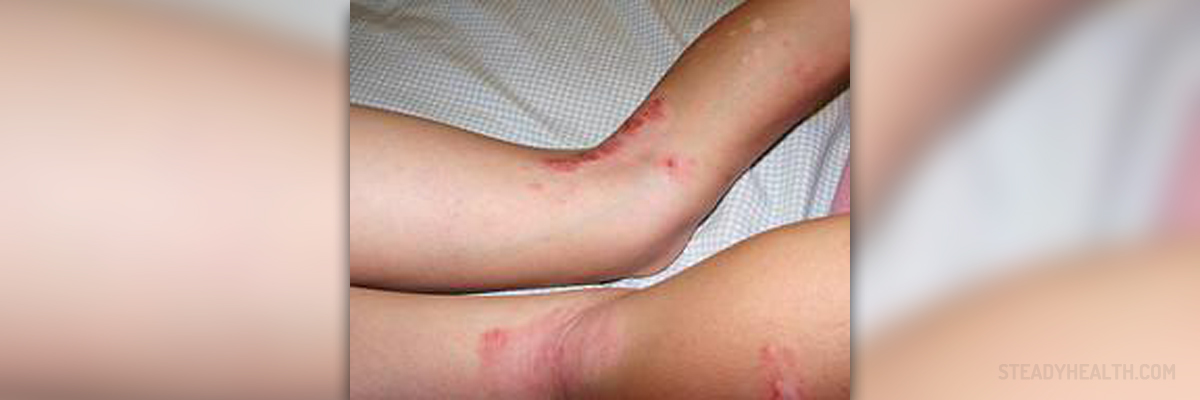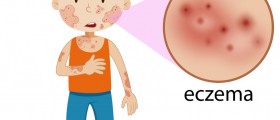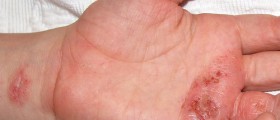Chronic, atopic dermatitis is a condition that affects many individuals in this world. It is also referred to as eczema, atopy or, simply, dermatitis. People often mistake this condition for an allergy or an increased level of skin sensitivity. However, atopic dermatitis goes hand-in-hand with asthma or other allergies such as hay fever. This health problem may run in families, manifesting mainly through itching and rash appearing on the surface of the skin.
Additional Facts regarding Atopic Dermatitis
Linguistically, dermatitis stands for an inflammation of the skin while atopic depicts diseases that are blended together, running in families or being hereditary.

As for further symptoms connected with atopic dermatitis, apart from the inflammation and itching, which can be severe, swelling, cracking, weeping, scaling and crusting may all appear on the skin.
This condition is known to affect both sexes and all ages of people, even though it is most frequently seen in babies and young children. Nevertheless, it can appear later in life, bothering adults or children in their puberty. Dermatitis may last for a long time, getting better and worse interchangeably, flaring up or subsiding completely from time to time. Children usually keep dry skin as they grow older, but dermatitis vanishes – temporarily, in most cases.
Yet, certain environmental aspects like harsh weather, seasonal allergies or exposure to harsh cosmetic products, can either make ongoing dermatitis worse or lead to this condition.
Atopic Dermatitis and Other Types of Eczema
Since people often mix these conditions, the following lines will provide you with certain distinctive features.
Basically, eczema is a condition manifesting through skin inflammation. Many subtypes of this skin problem exist, including dermatitis. However, atopic dermatitis occurs along with asthma and allergies, not manifesting solely through skin problems.
As for eczema, it can come in many forms such as contact eczema, allergic contact eczema, seborrheic eczema, nummular eczema, neurodermatitis or stasis dermatitis. All these types of eczema have different features and affect the skin of the sufferer in specific ways.
Is Dermatitis Contagious?
Many people fear atopic dermatitis, believing that it can infect them or affect them through contact with other sufferers. However, there are no reasons for such worry since atopic dermatitis is not contagious. Therefore, any kind of skin contact cannot lead to the onset of the same disease affecting the other person. On the other hand, you should be careful around people with skin infections caused by staph bacteria, herpes, yeast or fungi.
- Study participants comprised of 14 healthy volunteers (8 males, 6 females, average age of 27.1±7.7; range 18 to 54) and 11 atopic dermatitis patients (3 males, 8 females, 32.7 ± 12.0 years old, range 19 to 49). Atopic dermatitis subjects presented a mild to moderate condition, as assessed by Hanifin-Rajka criteria and EASI scores.
- Participants were asked to watch short video clips of 5 minutes, depicting people scratching their left forearm, or a neutral content video as a control, depicting the same persons shown in the scratching videos, but sitting idle.
- Video recordings were made of various volunteers scratching their left forearm, after induction of itch by histamine iontophoresis in the same fashion as described above. A panel of 12 (healthy) raters selected the most convincing itch & scratching recordings, by visual analog scale (VAS) ratings of itch intensity, as conveyed by the videos; subsequently, a final montage 5 minutes in length was cut. The video displayed three individuals, interspersed in video clips of 30 seconds each. In order to provide a neutral content video as a visual cues control (free of scratching images), another video montage was made, displaying the same persons that appeared in the “itch video”, but sitting idle (relaxed).
- Atopic dermatitis participants reported a significant increase in the perception of itch while watching itch videos, even when only a control solution was delivered to their forearm. A possible explanation of this phenomenon is the central mediation of “contagious”” itching within superior relays of CNS involving the “mirror neuron” system in the prefrontal cortex.
- Contagious itch may represent another expression of humans’ ability to emulate others and it could also be seen as a form of empathy. It is possible that the mechanism by which humans subconsciously respond by developing itch and an urge to scratch upon seeing a fellow human scratch, is a remnant of collective-social behavioral conditioning that was more pronounced in earlier primates, which was somewhat conserved.
















Your thoughts on this
Loading...